Obtaining an alternating electric current
Alternating current, in the traditional sense, is the current obtained from an alternating, harmonically varying (sinusoidal) voltage. Alternating voltage is generated in the power plant and is constantly present in every outlet on the wall.
Alternating current is also used to transmit electricity over long distances because the alternating voltage is easily increased. using a transformer, and thus electrical energy can be transmitted over a distance with minimal losses and then reduced back with the help of a transformer to a value acceptable for a household network.
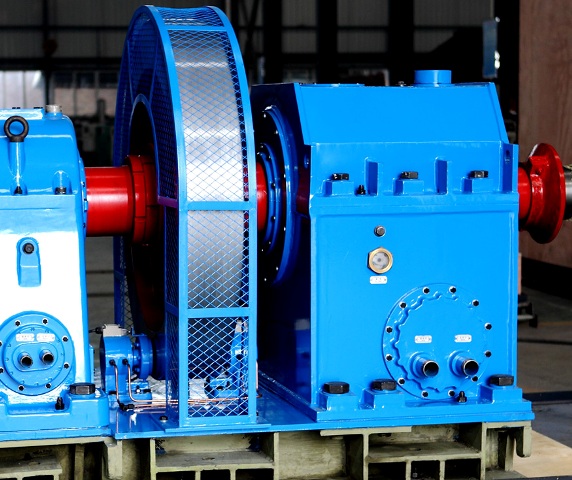
An alternating voltage (and therefore current) is generated in the power plantwhere industrial generator AC drives are driven by turbines driven by high-pressure steam. The steam is produced from water that is heated strongly by the heat generated by a nuclear reaction or by burning fossil fuels, depending on the type of power plant. In any case, the rotation of the alternator is the cause of the formation of alternating voltage and current.
To answer the question of how the generator is formed alternating current, it is enough to consider an elementary model consisting of a piece of wire and a magnet, recalling at the same time Lorentz force and law of electromagnetic induction... Let's say that there is a wire 10 cm long lying on the table, and in our hand there is a strong neodymium magnet, the size of which is slightly smaller than the wire. We attach a sensitive galvanometer or dial voltmeter to the ends of the wire.
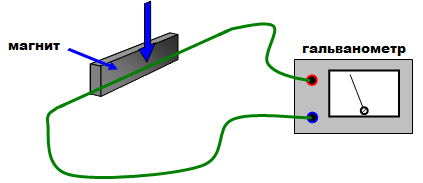
We bring the magnet with one of the poles close to the wire, at a distance of less than 1 cm, and quickly pull the magnet onto the wire through it from left to right — we will cross the wire with the magnetic field of the magnet. The needle of the galvanometer will suddenly deflect in a certain direction, then return to its original position.
Turn the magnet with the other pole towards the wire. And again, moving the hand from left to right, quickly cross the experimental wire with a magnetic field. The needle of the galvanometer swung sharply in the other direction, then returned to its original position. Instead of reversing the magnet, you can first move from left to right, and then from right to left, the effect of changing the direction of the generated current will be the same.
The experiment showed that in order to obtain an alternating voltage, we must either move the magnet across the wire to the right and left, or cross the wire with alternating magnetic poles. In the generator in the power plant (and in all traditional alternators) the second option applies.
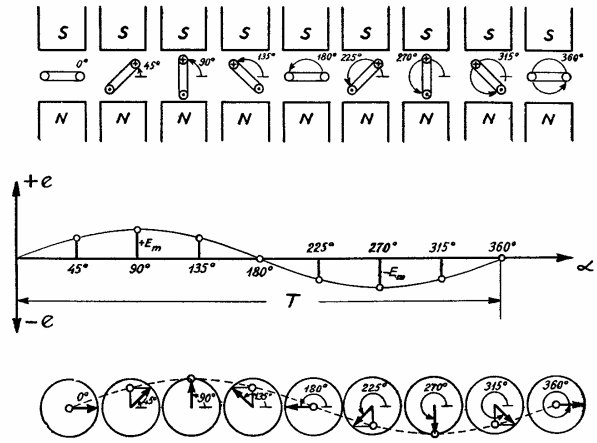
The principle of operation of the generator — obtaining alternating electromotive force (voltage)
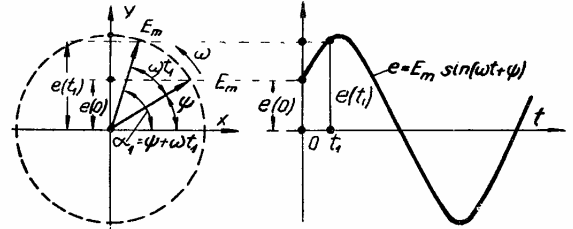 AC sinusoidal voltage
AC sinusoidal voltage
An alternator in a power plant consists of a rotor and a stator.The mechanical energy of the rotating turbine is transmitted to the rotor. The magnetic field of the rotor is concentrated on its pole parts and is created either by permanent magnets attached to it or by a constant voltage current flowing in the copper winding of the rotor.
Normally, the stator winding consists of three separate windings arranged in relation to each other, resulting in an alternating voltage and current in each of the three windings. Thus, each of the three stator windings is a source of alternating voltage, and the instantaneous values of the voltages are shifted in phase with each other by 120 degrees. This is called three-phase alternating current.
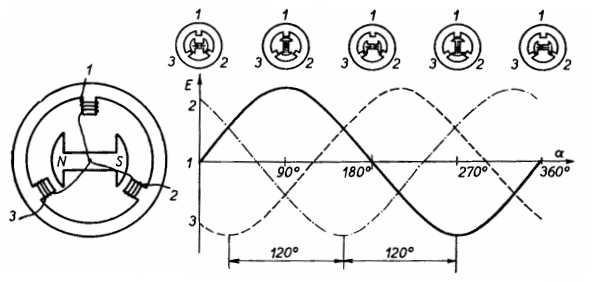
Obtaining three-phase AC voltage and current
The rotor of a generator with two magnetic poles, rotating at 3000 rpm, gives 50 crossings of each phase of the stator winding per second. And since there is a zero point between the magnetic poles, that is, the place where the induction of the magnetic field is zero, then with each complete rotation of the rotor, the voltage induced in the coil passes through zero, then changes polarity. As a result, the output voltage has sinusoidal shape and frequency 50 Hz.
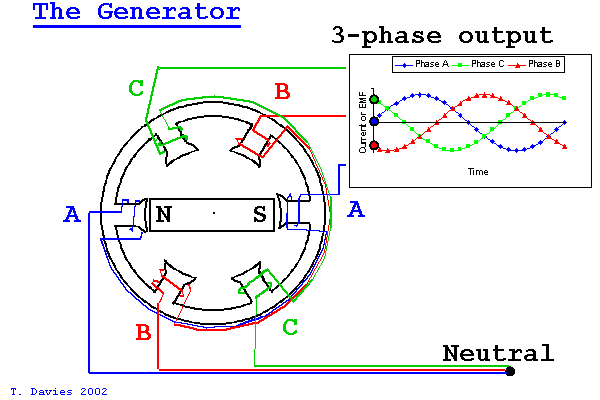
When an AC voltage source is connected to a load, an AC current is produced in the circuit. The voltage and the maximum permissible current of the stator are the higher, the stronger the magnetic field of the rotor, i.e. the greater the current flowing in the rotor windings. In synchronous generators with external excitation, the voltage and current in the rotor windings are created by a thyristor excitation system or an exciter - a small generator on the shaft of the main generator.
See also:
Main characteristics (parameters) of alternating current
Generation and transmission of alternating electric current
How do DC and AC generators work?
